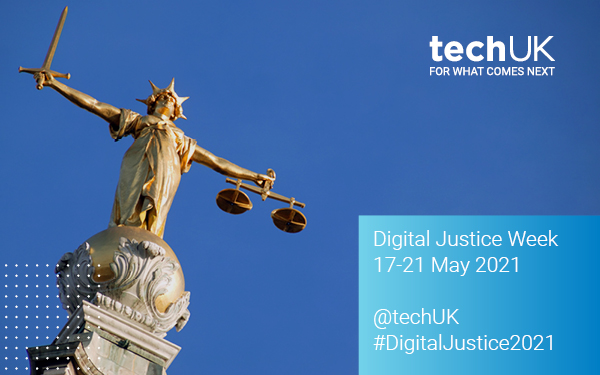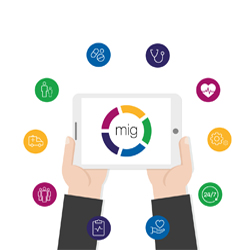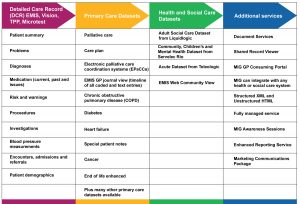6 tips for successful interoperability project scoping
"Project Management is tricky, or at least not quite as easy as many people will have you believe. No two projects are ever the same, and Project Managers aren’t necessarily experts in every single aspect of the area that the project focusses on. But what I have learnt is to be a success and for your project to be a success, is to ensure that you have the right people involved in your project at the right time. But more importantly, as you likely won’t be a subject matter expert, is to ensure you ask the right questions and get those experts thinking and providing the answers you need to deliver what is required."
Liam Hunn, Director of Product Management, Healthcare Gateway
Project scoping is the initial phase of an interoperability project: identifying existing interoperability challenges, data sharing needs and the scale of solutions required to fulfil them.
At Healthcare Gateway, our project team are Prince2 and ISO27001 certified, and interoperability specialists in building successful and tailored solutions, regardless of existing technology or standards. Our project team have managed hundreds of projects, connecting thousands of clinicians to patient data. Successful projects have bridged data gaps by delivering solutions to provide holistic views of data in real-time, which has improved the quality of care and clinical safety, subsequently enhancing the patient experience.
Our tips for interoperability project scoping
1. What is the problem you are trying to solve?
Digital requirements vary but are often complex depending on the organisations and the data to be exposed. Within the NHS, resources are limited and with the digital agenda continually developing it is essential to understand your specific data and care needs from an end user and citizen perspective. By exploring and exposing where your organisations need to level-up in alignment with national frameworks, you can identify the aims and outcomes of the interoperability project, making the scoping phase easier to shape and manage.
It is critical to work closely with all stakeholders involved in a project to understand their specific data needs, including the data they currently access, and perform gap analysis to understand where interoperability could have a greater impact. This data audit is the starting point in creating an achievable roadmap to interoperability to provide clinicians with the rich data they need to improve patient care pathways.
A collaborative approach with key stakeholder groups allows you to be agile in meeting the data needs of all stakeholders through available technology solutions, allowing for efficient adoption and realisation of benefits for all participants in a project.
2. What is the scale of the problem?
Understanding the scale of the project of work by evaluating the current digital landscape enables you to identify the number and geography of system connections and level of work required to achieve the desired project outcomes. This differs significantly from digitally mature areas to areas that are leveling up and even more granular at organisational level.
Interoperability projects come in all shapes and sizes and require expertise across many disciplines to factor technical knowledge, experience and resources needed. Employing a managed service led by experts provides you with confidence that all aspects of a project are considered and delivery is successful, making vital connections between siloed systems quickly and seamlessly taking away the burden of the “unknowns” that crop up in any programme of work.
3. Prioritise your project of work
You may face particular use cases which present a pressing need for integration of data due to NHS deadlines or perhaps clinical and patient safety needs. High priority areas may not have adequate resources in place to make progress quickly. Project teams undertake significant planning to consider what systems are in place currently, what systems are available that meet your needs and how to successfully join up those systems with little disruption to the end users. These projects are likely to take a large proportion of your programme time frame, so whilst that is going on, consider step four.
4. Identify quick wins and realise benefits as quickly as possible
The success of a project is greatly increased when the benefits of interoperability in clinical settings are realised as rapidly as possible. Off the shelf technology that provides interoperability where and when it is needed, will meet the aims of your interoperability projects at pace.
The Medical Interoperability Gateway (MIG) is a secure middleware technology which enables the two-way exchange of patient information between health and social care organisations. Our real-time patient data can be consumed in 80+ clinical systems connecting any system and any setting to feed primary, social care, acute and mental health data quickly and easily. Our technology coupled with expertise is a formula for success.
5. Understand the challenges faced and think ahead to future requirements
Information Governance is essential in the secure and effective delivery of data feeds, ensuring suitable legal documentation is created which clearly defines the reasons and benefit of your interoperability project and where and what patient information is going to be shared. It is key to be forward thinking when documentation is created, whether it’s a sharing agreement, data protection impact assessment (DPIA) or other legal documents that authorise the sharing of information, to allow for future amendments to avoid a full re-write of documents when adapting to changing data sharing needs.
6. Keep it simple
To establish interoperability in complex healthcare infrastructures, multiple stakeholders will be involved across healthcare settings. However, when it comes to establishing interoperability solutions, a single solution and specialist team to support will reduce project times and save valuable resources. At Healthcare Gateway, we are the one stop shop for interoperability; delivering successful projects in less than 12 weeks, allowing you to meet or exceed your deadlines.
Healthcare Gateway offers end to end interoperability support, providing the expertise to achieve your interoperability strategies. From project scoping to tailored project management, you’re in safe hands. We have already helped over 4,500 health and social care organisations to get connected, yours could be next.
Recent blog posts
By submitting this form, you agree to our privacy policy.
Contact us
To find out more about our solutions, get in touch.

By Liam Hunn, Director of Product Development at Healthcare Gateway
Liam entered the world of interoperability 8 years ago, and since has built a wealth of expertise leading teams across both project and product management. Working closely with customers and partners across the healthcare landscape, Liam’s experience has supported the implementation of unrivalled interoperability solutions that provide quality care outcomes for patients across England.












